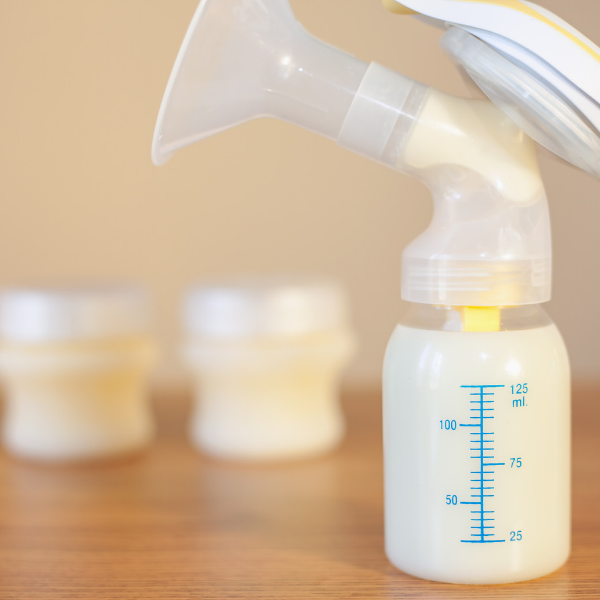
Breast pumps are pretty unsexy. They’re not glamorous, and they’re not fun. But in this modern world we all need them at some point after having a baby – whether that’s to go back to work, to provide medically necessary supplementation, or even just to give a bottle to the babysitter.
Breast pump usage causes lots of complaints, from pain and discomfort, to uncertainty over how much milk should come out, to the sheer tedium of doing it. Pumping may be necessary, but there are definitely a few things that can make it a little easier to be hooked up to the tubes multiple times each day! Here are six questions for you if you struggle with pumping breastmilk.
Most breast pumps come with a set of flanges (the plastic cups that you place on your breasts), but they’re not actually one-size-fits-all. Did you know that there are a range of sizes for different breasts and nipples? Too-small flanges are a common cause of pain while pumping. Your entire areola area, not just the nipple, should be sucked all the way into the tube of the flange while pumping.
2. Are You Lubricating Your Flanges?
Breast pumps don’t come with a lot of instructions, and they especially fail to mention that you should be using some lubricating substance around the tube of the flange. Dry plastic sucking in your breast is, yeah, not very comfy. You can express a drop of breastmilk by hand and use that to lubricate the flange tube area; use a dab of coconut oil; or even try out this special spray just for breast pump usage.
3. Are You Setting Your Area Up for Success?
Wherever you sit down to pump most frequently, gather all of your supplies and try to make it a pleasant spot to sit several times a day. Swap out your chair for a comfier one, get a plush blanket, and keep a basket nearby with your pump parts, snacks, water bottle, tissues, remote, phone charger, breast pads, nipple ointment, and any other items you’ll want to have within easy reach once you’re hooked up to the pump.
4. Are You Cutting Down on Time Spent Washing?
Cleanliness is important, but…psst…did you know that you don’t have to spend 20 minutes taking apart, soaking, scrubbing, and sterilizing all those little pump pieces after every pumping session? Keep a large plastic zip bag handy, throw the pump attachments in after you’re done, and put the bag in the fridge. This will keep it fresh for your day’s pumping sessions, and at the end of the day you can wash and sanitize once.
Important note: this isn’t recommended if you have a baby who is a preemie or has a compromised immune system. If this is the case with your baby, purchase multiple sets of pump parts instead, and then wash them all at the end of the day.
5. Are You Stimulating Your Letdown Reflex?
When you breastfeed your baby, the rush of love feelings (oxytocin) causes your milk ejection (or “letdown”) reflex to kick in, letting the milk flow freely. However, the cold plastic of a pump may not always be as effective at draining the breast as a real baby. Many parents have held up a pump in shock after twenty minutes of pumping to find only an ounce or two in the bottle, meanwhile their breastfed infant is chubby and well-fed.
You can help stimulate the letdown reflex while pumping by bringing your baby into it. Try nursing on one side while simultaneously pumping on the other. If you’re at work, or your baby is otherwise not with you at the time, smell some clothing that belongs to your baby, and look at pictures or cute videos of your baby to help you relax and enjoy some oxytocin flow.
Pumping may not be fun, but knowing what a wonderful thing you’re doing for your baby makes the sacrifice feel worth it. And by implementing these suggestions into your routine, you can help reduce or eliminate some of the discomfort or frustration you may be experiencing.
What was your experience using a breast pump?